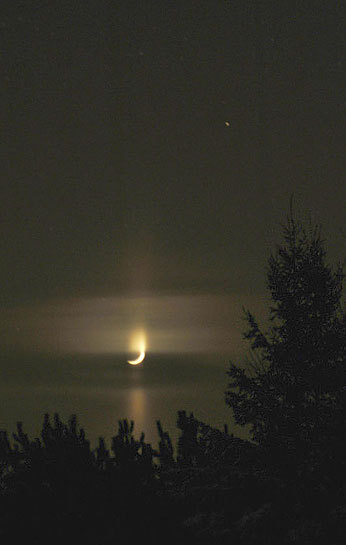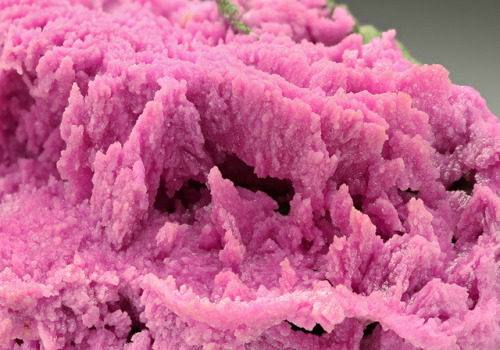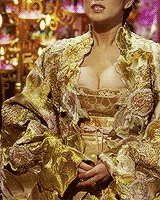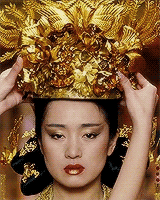Chalcopyrite, Sphalerite

Chalcopyrite, Sphalerite
Cu1+Fe3+S2, ZnS
Locality:
Büschhof Quarry (Schretzmair Quarry), Wirtenbach, Waldbröl, Bergisches Land, North Rhine-Westphalia, Germany
Image width approx. 3.5 mm
Photo by Michael Pfeil
More Posts from Othermanymore and Others
I'm pretty new here, and I don't actually know much about dinosaurs (just followed this blog because it seemed really cool and interesting) so could you explain what shrink-wrapped means?
Of course! See, modern animals have a lot of muscles, fat, fluff, etc, and end up looking very little like their actual skeleton. For example, look at how much fluff owls have:

(Source)
However, lots of palaeoartists completely ignore this! They basically stretch skin over the bones and call it a day. One especially bad example that was featured on @palaeofail is this poor pterosaur:

It barely has room for its digestive system. It’s definitely missing the air sac system that allows it to breathe. It’s got virtually no muscles on the arms - how does it fly?? - on the head (no wonder its mouth is open. It has no jaw muscles to close it!), on the torso (it needs to flap), or on the legs (walking) It doesn’t have any fat at all, so it’s definitely starving (maybe because it can’t fly or close its moth?). The skin is much too thin; you can see all of the bones and its wing membranes should be much, much thicker. And it’s missing the hair-like pycnofibres that should be covering its body!
Many palaeoartists have started to strike back at this by drawing modern animals like we might draw them if we found their bones:

(Source)
[House cat]


(Source)


Moon pillars are a type of light pillar. Moon pillars occur when the Moon is low enough in the sky to be close to the horizon. The ice crystals involved are generally flat or columnated, allowing a vertical beam of light to reflect above and below the Moon in a straight line. (Source)

Idnrik-beast (rus. Индрик, derived from old rus. Inorog (Инорог) — “unicorn”) — is a mythological “father of all beasts” from russian legendary. Mentioned in famous Golubinaya (Голубиная) Book (a collection of Eastern-Slavic folk spiritual poems and psalms of the late XV — early XVI century). It is believed that Indrik took form of an enormous creature with a bull’s body, head of a horse and legs of a deer. The can have both one or two horns. Indrik is a master of all groundwaters and underground troves, the protector and king of animals. According to many works of folklore, under certain circumstances Indrik can act as a magical helper of the hero, helping him to find treasure and get rid of the enemies.






Jessica Madorran - http://jmadorran.tumblr.com - https://www.etsy.com/shop/jessicamadorranart?ref=profile_shopicon - https://www.artstation.com/artist/jmadorran - https://jessicamadorran.threadless.com - http://jessicamadorran.storenvy.com - https://www.inprnt.com/gallery/jmadorran - http://jmadorran.blogspot.com.es
-
 moonfullwonderer reblogged this · 1 year ago
moonfullwonderer reblogged this · 1 year ago -
 moonfullwonderer liked this · 1 year ago
moonfullwonderer liked this · 1 year ago -
 lygodactilys reblogged this · 3 years ago
lygodactilys reblogged this · 3 years ago -
 muziktekayboldum liked this · 4 years ago
muziktekayboldum liked this · 4 years ago -
 shapeshifter98 reblogged this · 4 years ago
shapeshifter98 reblogged this · 4 years ago -
 batsidian liked this · 5 years ago
batsidian liked this · 5 years ago -
 yuntheanimeson liked this · 7 years ago
yuntheanimeson liked this · 7 years ago -
 eimyjaz reblogged this · 7 years ago
eimyjaz reblogged this · 7 years ago -
 refractario reblogged this · 7 years ago
refractario reblogged this · 7 years ago -
 nuggethunter--2 liked this · 7 years ago
nuggethunter--2 liked this · 7 years ago -
 plantiedras reblogged this · 8 years ago
plantiedras reblogged this · 8 years ago -
 hanami-sushi liked this · 8 years ago
hanami-sushi liked this · 8 years ago -
 twistedsardonic reblogged this · 8 years ago
twistedsardonic reblogged this · 8 years ago -
 slashingpath04 liked this · 8 years ago
slashingpath04 liked this · 8 years ago -
 soren-grey liked this · 8 years ago
soren-grey liked this · 8 years ago -
 justuntiljuly liked this · 8 years ago
justuntiljuly liked this · 8 years ago -
 wolffeeder reblogged this · 8 years ago
wolffeeder reblogged this · 8 years ago -
 wolffeeder liked this · 8 years ago
wolffeeder liked this · 8 years ago -
 baseball7777-blog1 liked this · 8 years ago
baseball7777-blog1 liked this · 8 years ago -
 loudislove reblogged this · 8 years ago
loudislove reblogged this · 8 years ago -
 loudislove liked this · 8 years ago
loudislove liked this · 8 years ago -
 floralcrows reblogged this · 8 years ago
floralcrows reblogged this · 8 years ago -
 twistedsardonic reblogged this · 8 years ago
twistedsardonic reblogged this · 8 years ago -
 aswarp liked this · 8 years ago
aswarp liked this · 8 years ago -
 xolavender reblogged this · 8 years ago
xolavender reblogged this · 8 years ago -
 xolavender liked this · 8 years ago
xolavender liked this · 8 years ago -
 maternalcube reblogged this · 8 years ago
maternalcube reblogged this · 8 years ago -
 timetravelintaurus reblogged this · 8 years ago
timetravelintaurus reblogged this · 8 years ago -
 wandereroftheuniverse liked this · 8 years ago
wandereroftheuniverse liked this · 8 years ago -
 reinbraun reblogged this · 8 years ago
reinbraun reblogged this · 8 years ago -
 titrationturtle reblogged this · 8 years ago
titrationturtle reblogged this · 8 years ago -
 f4rfields reblogged this · 8 years ago
f4rfields reblogged this · 8 years ago -
 piccolowoes reblogged this · 8 years ago
piccolowoes reblogged this · 8 years ago -
 piccolowoes liked this · 8 years ago
piccolowoes liked this · 8 years ago -
 last-hours-of-eternity liked this · 8 years ago
last-hours-of-eternity liked this · 8 years ago




























